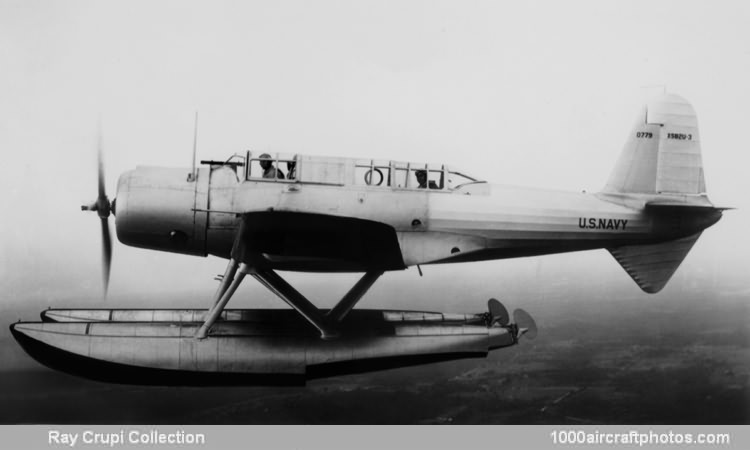10/31/2010. Remarks by Johan Visschedijk: "An all-metal, low-wing monoplane with two crew seated in tandem beneath a long glasshouse, simple radial engine and retractable landing gear: the definition was typical of the US Navy scout-bombers and torpedo-bombers of the late thirties – the new generation which followed the classic biplanes and laid the foundation for the combat types of WW II.
An aircraft fitting this description in every respect was the XSB2U-1 ordered from Vought on October 11, 1934, as the Navy's first monoplane scout-bomber. Suitability of a monoplane was by no means accepted without question at that time, however, and four months later Vought received a contract for a new biplane scout-bomber prototype, the XSB3U-1, as well.
Both the new Vought prototypes reached NAS Anacostia, Washington, District of Columbia, in April 1936, the XSB2U-1 having first flown on January 4, 1936; comparative trials clearly established the superiority of the monoplane. A production order for 54 SB2U-1s was placed on October 26, 1936, and further work on the biplane was dropped. Completed in July 1937, the SB2U-1 was powered by an 825 hp Pratt & Whitney R-1535-96 Wasp fourteen-cylinder two-row air-cooled radial engine, improving the top speed performance by some 20 mph (32 kmh).
Delivery of the SB2U-1s began on December 20, 1937, to Navy Squadron VB-3. In January 1938 the Navy ordered 58 SB2U-2s with the same engines, differing from the earlier model in having a small increase in gross weight due to new equipment, these were delivered during the latter months of 1938.
The last SB2U-1 was converted to the pictured XSB2U-3 as a floatplane in 1939, but the production SB2U-3s all served as landplanes, the XSB2U-3 was eventually also flown as a landplane. The SB2U-3s had the R-1535-02 engine, increased standard fuel capacity plus provision for long-range tanks for ferry flights, 0.50 in (12.7 mm) machine guns fore and aft, increased armor protection and higher operating weights.
Ordered on September 25, 1939, the first of 57 SB2U-3s was flown on January 10, 1941, deliveries to operational units started the following March. These were the last variants in the series and the first to carry the name Vindicator (aircraft supplied to Britain had previously been named Chesapeake).
By 1940, SB2U-1s and SB2U-2s were serving with VB-2 (USS Lexington), VB-3 (Saratoga), VB-4, VS-41 and VS-42 (Ranger) and VS-71 and VS-72 (Wasp). Most of the SB2U-3s were issued to Marine squadrons, primarily equipping VMSB-131 and VMSB-231. These squadrons saw some action against Japanese forces in the Pacific during 1942, including the Battle of Midway, but were soon replaced by later types."
